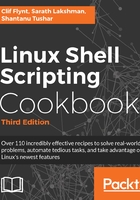
Introduction
In the beginning, computers read a program from cards or tape and generated a single report. There was no operating system, no graphics monitors, not even an interactive prompt.
By the 1960s, computers supported interactive terminals (frequently a teletype or glorified typewriter) to invoke commands.
When Bell Labs created an interactive user interface for the brand new Unix operating system, it had a unique feature. It could read and evaluate the same commands from a text file (called a shell script), as it accepted being typed on a terminal.
This facility was a huge leap forward in productivity. Instead of typing several commands to perform a set of operations, programmers could save the commands in a file and run them later with just a few keystrokes. Not only does a shell script save time, it also documents what you did.
Initially, Unix supported one interactive shell, written by Stephen Bourne, and named it the Bourne Shell (sh).
In 1989, Brian Fox of the GNU Project took features from many user interfaces and created a new shell—the Bourne Again Shell (bash). The bash shell understands all of the Bourne shell constructs and adds features from csh, ksh, and others.
As Linux has become the most popular implementation of Unix like operating systems, the bash shell has become the de-facto standard shell on Unix and Linux.
This book focuses on Linux and bash. Even so, most of these scripts will run on both Linux and Unix, using bash, sh, ash, dash, ksh, or other sh style shells.
This chapter will give readers an insight into the shell environment and demonstrate some basic shell features.